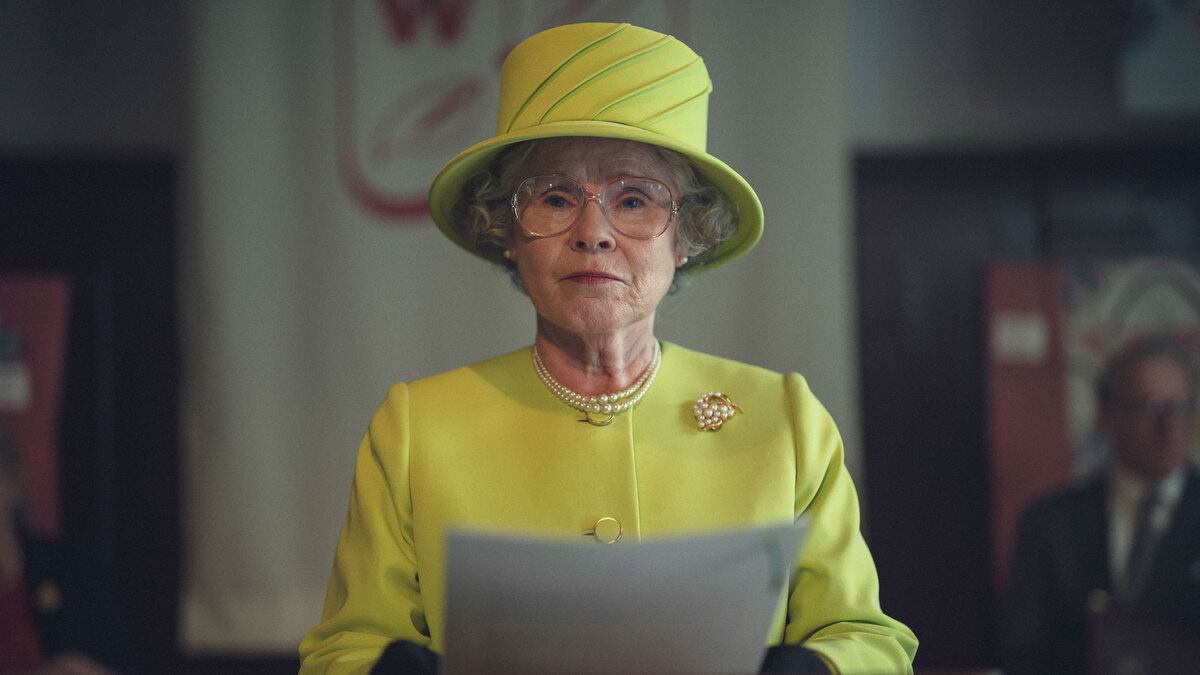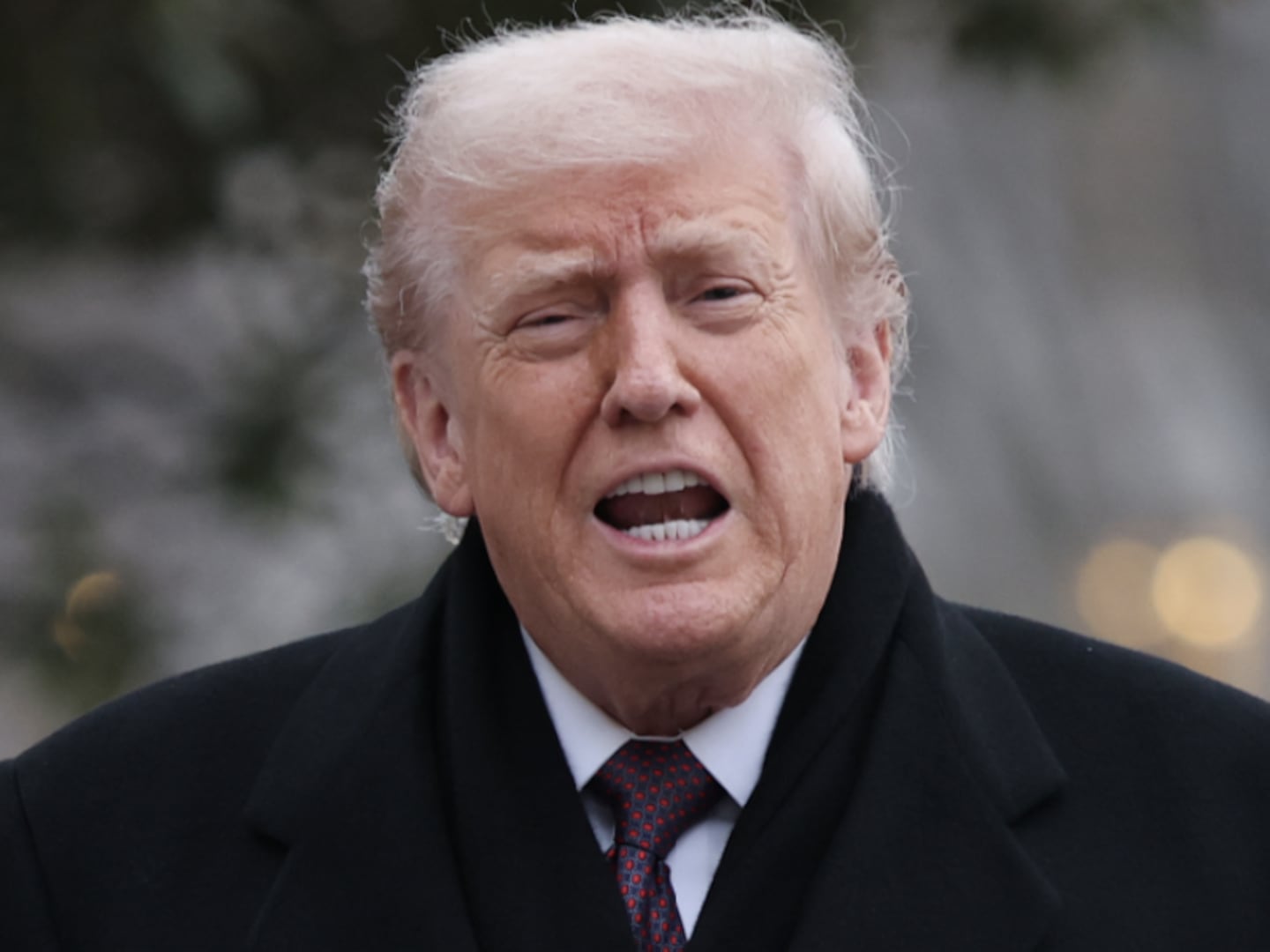Royalist is The Daily Beast’s newsletter for all things royal and Royal Family. Subscribe here to get it in your inbox every Sunday.
The final six episodes of The Crown dropped Thursday. As per precedent, furious debate has erupted concerning writer Peter Morgan’s use of dramatic license. Fear not, however, for The Daily Beast is here to untangle truth from fiction, and the really tricky stuff—what lies between. And, caution, spoilers ahead.
The first of the new episodes, actually episode 5 as episodes 1-4 were released last month, is largely concerned with the fragile and tense relationship between Prince Charles and Prince William as they struggle in the aftermath of Princess Diana’s death.
As is often the case with The Crown, writer Peter Morgan hits the nail on the head with the larger truth—William and Harry certainly felt neglected by a distant father as bereaved teenagers, as Harrys memoir Spare makes clear—while bending the details to his dramatic purpose.
Charles, for example, is shown talking to his sister who says it’s a good thing that William has friends at Eton because Charles had “no friends” at school.
“True,” Charles replies, and true it is; Charles is known to have felt isolated at Gordonstoun, and former classmate Johnny Stonborough wrote in the Telegraph that it was “impossible” to befriend him without becoming the targeting of bullying for being “one of the king’s friends.”
As part of Charles’ drive to bond with his kids he takes them on an official trip to British Columbia and skiing in Whistler, but the trip turns out to be something of a disaster as they are mobbed by huge crowds wherever they go. That actually happened. William characterizes Charles as jealous of his popularity, spitting out the words, “You struggle being upstaged.”
Of course, it’s impossible to know if such a conversation ever happened but the larger point is true: fictional William presumably has Diana’s interview with Martin Bashir in mind, where she made the same claim. And now, with Charles king, William’s popularity still outstrips his.
Readers of Harry’s memoir Spare might have the infamous tennis racket story in mind, where Harry wrote: “Willy did everything he (Charles) wanted, and sometimes he didn’t want him to do much, because my dad and Camilla didn’t like Willy and Kate getting too much publicity.” Harry alleged in Spare that ahead of one particular public engagement, Charles’s staff had insisted Kate was not photographed holding a tennis racket, writing: “Undoubtedly that kind of photo would have pushed Dad and Camilla off every front page. And that couldn’t be tolerated under any circumstances.”
Episode six opens with the queen having a hilarious nightmare that Tony Blair has been made king. When she awakens, the BBC is just shutting down for the night and starts playing “God save the Queen.” Yes, that really did happen, and not just for radio; it was a feature of the “close” of the TV stations for the night as well.
The episode shows the queen as obsessed by and jealous of Blair’s popularity ratings. This seems unlikely, and there is no evidence to suggest that she would ever have uttered, in casual conversation with Blair, the words: “The spell that we cast is our immutability.”
But did the queen seek advice from Blair on modernizing the monarchy. Who knows? That is the whole point of the private audience after all. She may have. But Prince Philip is accurately portrayed of dismissive about the prospect. In real life he once said he was pro-modernization but “not for the sake of buggering about with things in some kind of Blairite way.”
There seems no reason to disbelieve that focus groups were and are used to gauge attitudes to the monarchy as shown in this episode, but these scenes seem also to be a reference to Prince Charles’ ill-fated Way Ahead group, formed of senior royals in the 1990s to brainstorm modernization plans (also referenced in series five).

(l to r) Ed McVey as Prince William, Dominic West as Prince Charles, and Luther Ford as Prince Harry in 'The Crown.'
NetflixTony Blair was famously treated to a slow handclap by members of the British organization the Women’s Institute when he addressed their national conference in July 2000, in stark contrast to the rapturous reception offered to the queen.
Episode three begins with fictional “sliding doors” encounter between Kate Middleton and her mother, Carole, and William and Diana at Christmas in 1996 who are collecting for charity. While not true, it signposts Carole’s belief that her daughter is “special” and destined to marry William. Carole then gives destiny a helping hand by encouraging Kate to defer university entry by a year and switch from Edinburgh to Scotland to be alongside William, which did actually happen.
Kate is later shown berating her mother for encouraging her to volunteer in Chile and do an art course in Florence in the hopes of engineering another meeting with William. Given that Kate did both of those things in her gap year, as William did, it doesn’t seem an outrageous suggestion that her mom might have been involved.
Kate has laughed off suggestions she had pictures of Prince William on her bedroom wall as a teenager, but is seen here cutting them out.
William’s first girlfriend at St Andrew’s on the show, Lola Airdale-Cavendish Kincaid—“from a family so posh they had to name it thrice,” as one fellow student witheringly observes—is fictional, but he certainly had plenty of posh girlfriends before Kate. The heir to the throne dating a middle-class girl without a stately home was considered wildly shocking in many circles.

Meg Bellamy, center, as Kate Middleton in 'The Crown.'
Justin Downing/NetflixThe well-known story of the underwear show in which Kate modeled, catching William’s eye, is in here, of course, although it’s hard to believe William’s bodyguard would have interrupted William mid-first snog with Kate to tell him the queen mother had died, especially as William was on a ski holiday with his brother and father in Klosters, Switzerland when she died. The larger point, of course, is that duty always bloody calls.
A similar narrative impetus seems to be behind a fictional sequence in which William charges up from lunch at Kate’s parents’ house to be at the queen’s side on the Golden Jubilee. Of course, in real life, he was always meant to be there.
Harry and William’s relationship is portrayed as more highly antagonistic than those who knew them when they were teenagers tend to recall. Although Peter Morgan told Variety he hadn’t read Spare, these scenes seem to be straight out of its pages, as is William’s involvement in Harry wearing a Nazi uniform to a friend’s party in the final episode. Annie Sulzberger, head researcher for the series, recently told Vanity Fair that Spare “helped us think, ‘OK, this is an insider account, and I feel like we’re on the right track.’”
Episode 8 is a largely fictionalized account of Victory in Europe day in 1945. It shows a young Princess Margaret and the queen sneaking secretly out of the palace with Lord “Porchey” Porchester (later the queen’s racing manager and best male friend) and Peter Townsend (the king’s equerry who Margaret would later fall in love with) and hitting a party in a basement club at the Ritz where they dance the jittabug with Black GIs.
It is based on truth: the princesses were part of a group of 16 who left the Palace that night (including Townsend and Porchey). They did go to the Ritz, but not to seedy jazz club in the basement: “For some reason, we decided to go in the front door and do the conga,” Margaret Rhodes, the queen’s cousin later recalled of their trip to the storied hotel. They tried to be incognito and failed–and were home by midnight, not dawn.
The episode is also about Princess Margaret and the queen’s relationship, especially at the end of Margaret’s life (and yes, she did scald her feet in a horrific accident in a bath in Mustique). Overall, the portrayal is beautifully done, and the VE day sequence illustrates their bond, and how the queen gave up a normal, carefree life to be monarch.

'The Crown' season 6.
NetflixRather like Bunbury in Oscar Wilde’s “The Importance of Being Ernest,” Margaret did have an imaginary friend called “Cousin Halifax” who was often blamed for her transgressions.
Episode ten, the final installment of The Crown (sob!) cleverly casts forward to the queen’s funeral, but largely deals with Charles and Camilla’s wedding. It’s fair to say that William and Harry were not overjoyed by the prospect, as the show makes clear—Harry wrote in his memoir that they “begged” their father not to marry Camilla.
The episode is perhaps a bit harsh on the queen, who is portrayed as somewhat grudging, but did actually make a speech at Charles’ wedding reception congratulating Charles on being “home and dry with the woman he loves.” The stuff about her contemplating abdication is invented, but makes a lot of sense in the context of soap opera narrative arcs.
And now The Crown is over!
There was truth, there was fiction but overall the big question is: Does one feel like one knows the royal family quite a bit better than we did before?
The answer, surely, is, yes, one does.
Hats—and crowns—off to all involved.







